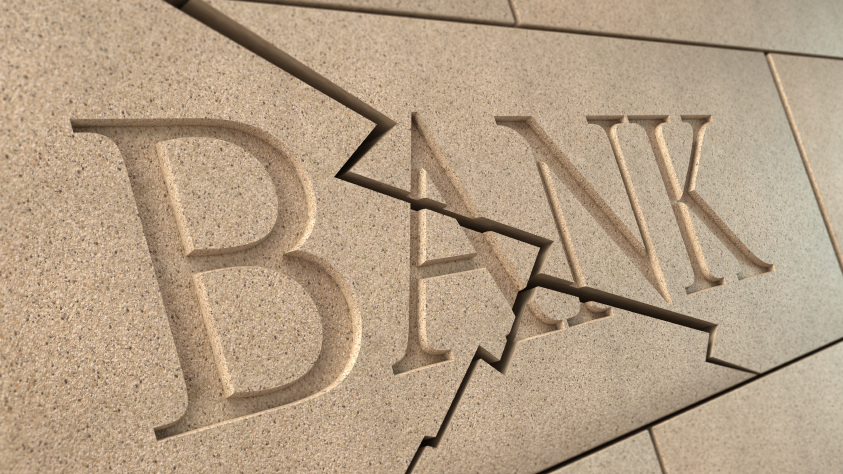The fourth and final immediate driver for Bitcoin is the investment sector. There has been no investment instrument anywhere like Bitcoin in the past year.
It is regrettable that this article comes just in the aftermath of the MtGox suspension, as the momentum of the currency has been considerably shook up. However, new services continue to pop up at an accelerating rate. I am therefore confident that the current faith dip is quite temporary; there is so much present investment in Bitcoin.
This is an article in a series on what Falkvinge identifies as Bitcoin’s four drivers. This is the fourth article, on investment. The others are unlawful trade, international trade, and merchant trade.
And hence, the fourth driver in Bitcoin is investment in two different meanings. It is an extraordinary investment as a store and accelerator of value, and it is an indirect driver in terms of people being invested in it to the tune of about 90 million US dollars. Let’s take them one by one.
Investment Instrument
Bitcoin has, on average, climbed about 85% per month in the past year, with an insanely high volatility.
To geeks like myself, that’s just a number without much context. But professional investment managers more or less crap their pants at anything that climbs more than 25% per year. Yes: per year. Bitcoin has climbed 85% per month on average.
I would therefore be very surprised if we didn’t start to see professional investment bankers taking positions in Bitcoin soon. This is a very mixed blessing; it means that the Bitcoin value climbs short-term, and it generates attention around the currency, but at the same time, the Bitcoin economy doesn’t need more hoarders and traders, it needs people who use it for daily transactions. But in order to get to a point where we can use it for more daily transactions, we need more attention around the currency so that more entrepreneurs create even more services.
The Wall Street derivatives have a yearly turnover of about 600 terabucks. Now, this is an insanely high value all in itself that may lead to way more instability than what Bitcoin ever will be capable of, but it shows the high amount of values being splashed around. My point right here and now is that throwing a mere tenth of a percent of this into Bitcoin, the case for which is compelling given the rate of appreciation, would still mean a 600-gigabuck investment.
This dwarfs all previous drivers, and just that makes it a very mixed blessing. For Bitcoin to survive long term, its primary use must be an exchange of value rather than a store of value — albeit both uses will likely be common, even with the same person.
My prediction would be that small enthusiast investors start out, overcoming the technical hurdles of investment, and that it moves from there as liquidity improves. It is still way too difficult to move money in and out of Bitcoin. Greasing this mechanism remains paramount.
Invested People
The second category is invested people. The current market cap of Bitcoin is in the range of 90 million dollars. A lot of people are individually invested in this to the tune of tens of thousands of dollars.
This is worth comparing to current seed funding for startups, which may get 25 kilobucks for a commercially viable idea. Bitcoin is currently hyperfunded to the tune of 90 megabucks.
Now, of course, this isn’t money that actually exist anywhere in a budget, like it would in a startup. The similarity exists merely on the investors’ side — it’s 90 million that exist as a value today that people do not want to lose, and they can help the ecosystem in order to not lose it. These are not people that must sit helpless like in an airliner cabin, but people that can make a difference to the outcome, each one of these people — and that’s also exactly what they are choosing to do, many of them.
The technical, entrepreneurial people who are invested to the tune of 90 million dollars is the largest asset that the Bitcoin ecosystem has today.
As a final note: as this series of posts has turned into an all-out SWOT analysis for Bitcoin, I will move on to talk about Bitcoin’s opportunities and threats in two upcoming series of posts.






Be careful of which services you link to. MyBitcoin just had another “gox” moment over the weekend where accounts were locked out. There is no password recovery method and no method to contact the site for support when locked out (other than to create another account, and pray).
Caution might be warranted when the party you are transacting with discloses no identity.
Speaking of, the other service that you reference — FlexCoin, has not shared much about their identity either. There are plenty of options for exchanges and ewallet services nowadays though centralized services are not a recommended destination for your bitcoins over the long run.
Linking in no way implies endorsement on my part.
“FlexCoin, has not shared much about their identity either. ”
Wow… The site is owned by Yooter Interactive Marketing in Pottsville, Pennsylvania .. the President is Roger Wehbe.
And that’s who is replying to your statement that “Flexcoin has not shared”.
you can mail me directly if you want, [email protected]
Hmm, so the criticism I’ve read is that BitCoin has no commodity value. I assume these four drivers are meant as an answer to that. For example “unlawful trade” gives it some commodity value because there will always be demand for unlawful trade.
As I understand it the difference from, for example the USD, is that the US government ensures there is a demand for dollars by requiring it to be used for paying taxes and in domestic trade.
What if a country would adopt BitCoin (or a similar scheme) as national currency, then this problem would be solved right? The security of the currency would be guaranteed by the technology, and the commodity value would be provided by the nation. Although loosing a lot of control, would it always be such a bad idea for the nation? The nation might benefit from their currency becoming popular (perhaps increasing trade) and tax havens might find the anonymity appealing?
Another thought: there’s nothing to stop a new flavour of “BitCoin” to pop up, and then there’s a new currency with the same 4 drivers and the commodity value for BitCoin would drop?
If another bitcoin (Bitcoin 2.0) would pop up, why would people move to it? Already there exists lots of infrastructure for old bitcoin, for example shops, exchanges etc. The Bitcoin 2.0 should have some very insteresting/better features so that people would adopt it.
Nothing prevents you from creating new version of Bitcoin right now. Just fork the source code from github and start programming 🙂
In your article ‘why-im-putting-all-my-savings-into-bitcoin’, you claimed that ‘The total money supply in the world is about 75 trillion US dollars.’ You now claim that the Wall Street derivatives have a yearly turnover of about 600 terabuck. How is it possible that 10% of that could be invested in bitcoins if it exceeds the total money supply of the world by a factor of 8?
The fact that the annual turnover in derivatives exceeds the world’s total money supply is part of the problem with said derivatives. But it is not a contradiction in terms.
Turnover is the total sum of all transactions. If you have one euro that changes hands five times, you have had a total turnover of five euros for a money supply of one euro.
Further, I was speculating about a tenth of one per cent. A millitotal, if you like, and not ten per cent, which would be a decitotal. This comes to 600 gigabucks.
These number are ridiculously hard to predict, of course. They are ballpark figures.
Thx for the reply. Im currently 20% networth invested. Trying to find a way to justify taking a larger position.